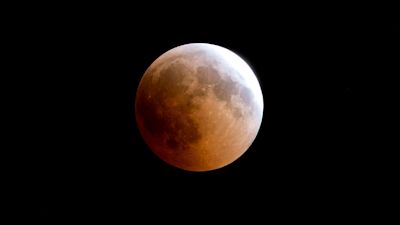How to see the rare 'superblood moon' this weekend

The combination of two rare lunar events will happen this weekend creating a "superblood moon" in the night sky.
Most of the western hemisphere will be treated to the spectacle but Brits will need to say up until the early hours of Sunday morning to get to see the Moon turn red.
Stargazers across the UK will get a chance to see the Moon turn a deep red, due to the Earth coming between the Sun and Moon.
A sight that will also be visible across South America, North America, some of Europe and Africa.
What is a blood moon?
According to NASA, a blood moon (named after the Moon's reddish glow) occurs during a total lunar eclipse. During a total lunar eclipse, earth lines up between the moon and the sun. This hides the moon from the sunlight.
When this happens the only light that reaches the Moon's surface comes from the edges of the earth's atmosphere.
The molecules in the atmosphere filter out most of the blue light, meaning by the time it hits the moon it is mostly a red glow, which the moon then reflects.
A lunar eclipse is different to a solar eclipse, this is when the moon moves between the sun and the earth, blocking out the sun's light and throwing huge parts of the earth into temporary darkness.
What is a supermoon?
A supermoon is when the moon appears larger than usual in the night sky, this occurs when the full moon coincides with the point the moon is closest to the earth during its orbit.
What is happening this weekend?
On Saturday, the supermoon and blood moon will coincide to create a "superblood moon".
Although lunar eclipses happen semi-regularly, this will be the first full one since May last year.
The eclipse will last just over five hours in total, but the moon will only be red for around 75 minutes while it is completely in earth's shadow.
Most people in Europe, the Americas, Africa, and the Middle East will be able to get a glimpse of the eclipse.
For those in Britain and Europe, the partial eclipse begins at 2.28am on Sunday 15 May, and it should turn red at around 3.29am and end by 4.54am.